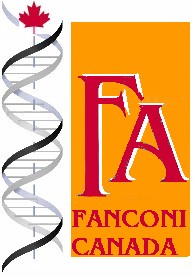 |
|
|||
|
About Fanconi Anemia
Fanconi Anemia (FA), first described in 1927 by a Swiss pediatrician Guido Fanconi, is the most common of the inherited anemias that lead to progressive, severe bone marrow failure, also known as aplastic anemia. The effects of the disease are devastating, leaving patients weak, prone to severe bleeding due to insufficient blood clotting and susceptible to infection. FA is a genetic disorder that occurs equally in males and females and is found in all ethnic groups. Though considered primarily a blood disease, it may affect all systems of the body. A Fanconi Anemia patient often, but not always, has other physical defects detectable at the time of birth ranging from minor to serious. Patients are also at an increased risk for developing leukemia and other cancers. Many children do not survive to adulthood. FA usually reveals itself when children are between the ages of 3 and 12, but in rare cases no symptoms are present until adulthood. Some babies are diagnosed at birth but some FA patients undoubtedly are never correctly diagnosed. The most common test to detect FA is called the Chromosome Breakage Test. The chromosomes in the cells of FA patients when studied in the lab, break and rearrange easily. Scientists do not yet understand the reason for this chromosome breakage, but can use it as a diagnostic test for the disease, if FA is suspected. This test involves just a blood sample from the patients where the stability of the chromosomes under the addition of destructive agents will indicate FA. Currently, there is no cure for FA. However, the following treatments are currently available to treat the bone marrow failure:
Guido Fanconi was a Swiss paediatrician, born January 1, 1892, Poschiavo, Canton Grisons (Graubünden) in the Italian-speaking region of Switzerland; he died October 10, 1979, in Poschiavo. Guido Fanconi was the son of Pietro Antonio, formerly a coffee shop owner in Spain, and Alice von Grebel, daughter of the president of the district court of Zurich. He went to school in Schiers (in the German speaking part of Switzerland) and Zurich and studied medicine in Lausanne, Bern and Zurich, obtaining his medical doctorate in 1919. From 1920 to 1926 he trained in paediatrics under Emil Feer-Sulzer (1864-1955) at the Kinderspital (the university children's hospital) in Zurich, and then gained more experience in academic centres in Europe until 1929. That year he became director of the Children's Hospital and professor of paediatrics at the University of Zurich. Fanconi is regarded as one of the founders of modern paediatrics and a great innovator in applying the scientific methodology of biochemistry and physiology to the investigation of clinical problems. In 1930 he gave a paper to the 2nd International Conference of Paediatrics in Stockholm in which he advocated the use of raw fruit in the treatment of acute diarrhoea. One discussant told him he was crazy, but this led to the development of pectin as an anti-diarrhoeal agent. One of his main concerns was the problems of children in the underdeveloped countries of the world. Fanconi was president of the International Pediatric Association from 1947 to 1950, and secretary general 1951-1967. In 1945 he founded the journal Helvetica Paediatrica Acta. His name is attached to 16 conditions in addition to Fanconi anemia. Birth defects are found in the majority of FA patients. These defects can involve any system of the body. The defects are sometimes many in number, or very few. There seems to be no predictability about the types of anomalies, even within families where more than one child has FA. Among the more common birth defects are the following:
|
| CRA registration number 868951724 RR 0001 | © 2005 FA Canada |

